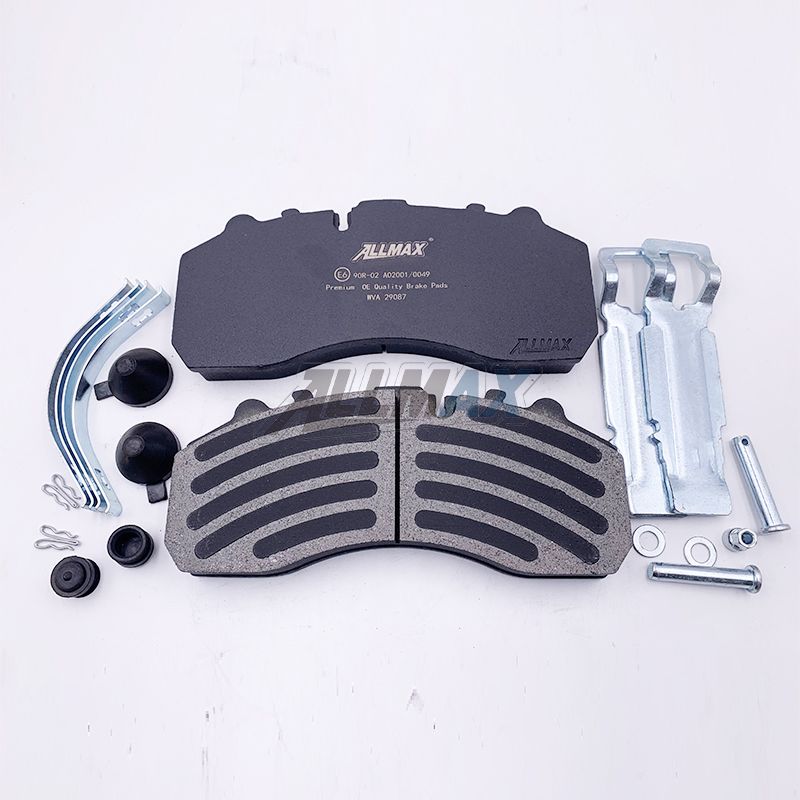Types Of Brake Pads: A Comprehensive Guide to Choosing the Right One
Brake pads play a crucial role in vehicle safety, and understanding the different Types Of Brake Pads is essential for optimal performance. In this guide, we'll delve into the specifics of organic, ceramic, semi-metallic, and low-metallic NAO brake pads, helping you make an informed decision for your vehicle.
Ensuring Vehicle Safety
One of the primary functions of brake pads is to ensure the safety of both the driver and passengers. Efficient brake pads contribute to shorter stopping distances, reducing the risk of accidents.
Impact on Braking Performance
Quality brake pads significantly impact braking performance. Choosing the right type can enhance overall braking efficiency, providing a smoother and safer driving experience.
Types of Brake Pads
Organic Brake Pads
Organic brake pads, made from natural materials like rubber, kevlar, and fiberglass, offer a quiet and smooth braking experience. They are an excellent choice for everyday driving.
Ceramic Brake Pads
Ceramic brake pads, known for their durability and low noise levels, are ideal for high-performance vehicles. They generate less dust and provide consistent braking performance.
Semi-Metallic Brake Pads
Semi-metallic brake pads, containing a mix of metals like copper, iron, and steel, are suitable for heavy-duty applications. They offer excellent heat dissipation but may produce more noise.
Low-Metallic NAO Brake Pads
Low-Metallic NAO brake pads, incorporating minimal metal content, strike a balance between performance and noise. They are suitable for diverse driving conditions.
Factors Influencing Brake Pad Choice
Driving Conditions
Consider your typical driving conditions – city commuting, off-road adventures, or high-speed highway driving – when choosing brake pads for optimal performance.
Vehicle Type
Different vehicles may require specific types of brake pads. Ensure compatibility with your vehicle's make and model for optimal safety and performance.
Budget Considerations
While safety is paramount, budget considerations can influence your choice. Explore options within your budget that meet your performance expectations.
Pros and Cons of Each Brake Pad Type
Organic Brake Pads
Pros: Smooth and quiet operation, ideal for everyday use.Cons: May wear out faster under heavy use.
Ceramic Brake Pads
Pros: Durable, low noise, and minimal dust.Cons: Generally more expensive upfront.
Semi-Metallic Brake Pads
Pros: Excellent heat dissipation, suitable for heavy-duty use.Cons: May produce more noise and dust.
Low-Metallic NAO Brake Pads
Pros: Balanced performance for various driving conditions.Cons: Moderate noise levels.
Signs It's Time to Replace Brake Pads
Squeaking or Grinding Noises
Unusual sounds while braking may indicate worn-out brake pads, and immediate replacement is recommended.
Reduced Braking Performance
If you notice a decline in braking efficiency, it's a clear sign that your brake pads may need replacement.
Warning Indicator Lights
Modern vehicles are equipped with warning lights that illuminate when brake pads are worn. Ignoring these warnings can lead to safety risks.
How to Choose the Right Brake Pads
Consult Your Vehicle Manual
Refer to your vehicle manual for manufacturer recommendations on the type of brake pads suitable for your specific make and model.
Seek Professional Advice
Consult with a qualified mechanic for personalized advice based on your driving habits and vehicle specifications.
Consider Personal Driving Habits
Your driving style and typical driving conditions should influence your choice of brake pads. If you frequently drive in stop-and-go traffic, choose pads that excel in such conditions.
Installation of Brake Pads
DIY Tips
While some enthusiasts may opt for DIY brake pad replacement, it's crucial to follow manufacturer guidelines and use the right tools for a successful installation.
Professional Installation Importance
For those less familiar with vehicle maintenance, professional installation ensures the correct fitment and optimal performance of your brake pads.
Frequently Asked Questions
Are Ceramic Brake Pads Better Than Organic?
Both have their advantages. Ceramic pads offer durability and low noise, while organic pads are smoother and quieter for everyday use.
Can I Mix Different Types of Brake Pads?
It's not recommended. Mixing different types may lead to uneven braking performance and increased wear.
How Long Do Brake Pads Last?
The lifespan varies, but on average, brake pads can last 30,000 to 70,000 miles, depending on driving conditions and pad type.
Do I Need to Replace Rotors When Changing Brake Pads?
Not always. If the rotors are in good condition, they can often be reused with new brake pads.
Can I Install Brake Pads Myself?
If you have the necessary skills and tools, DIY installation is possible. However, professional installation is recommended for optimal safety.
What Happens if I Delay Changing Brake Pads?
Delaying replacement can lead to decreased braking performance, increased stopping distances, and potential damage to other braking components.
In conclusion, understanding the Types Of Brake Pads is crucial for maintaining vehicle safety and optimal performance. Whether you prioritize smooth everyday driving or high-performance capabilities, choosing the right brake pads tailored to your needs is key. Regular inspections and timely replacements contribute to a safer and more enjoyable driving experience.


评论
发表评论